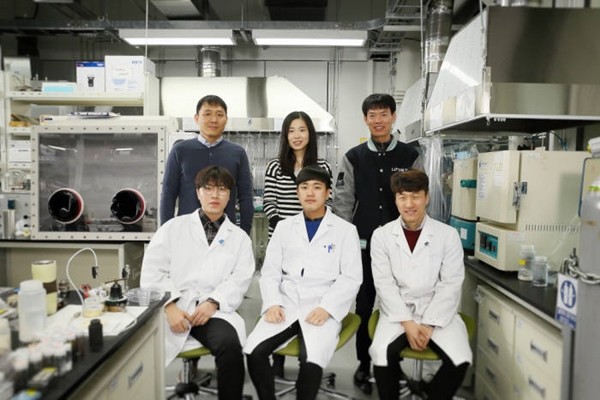Battery that can be stretched and maintain its performance and safety and can be used for wearable devices has been developed.
UNIST (Ulsan National Institute of Science and Technology, Chancellor Jung Moo-young) made an announcement that a research team led by Professor Park Soo-jin, Professor Seo Kwan-yong, and Professor Kim So-yeon of Energy and Chemical Engineering Department developed a polymer composite that is able to maintain its conductivity even if it is stretched and used this polymer composite as current collector of electrodes in order to develop lithium-ion battery that is safe and can be stretched. This is the first time in the world when a battery that can be stretched has been developed.
Current collectors of batteries for current wearable devices are made by mixing a substance with high electrical conductivity into a polymer that can be stretched well. However when these batteries are stretched, electrical conductivity dropped as connection of this conductive substance was disconnected.

Research team made a new polymer composite by imitating a structure of ‘Jabuticaba’ that is seen as Brazilian grape. It composed a polymer composite with cylindrical shape of carbon nanotubes and carbon blacks that take the shape of Jabuticaba and made a polymer composite where carbon blacks are attached to carbon nanotubes like actual Jabuticabas.
When this new polymer composite is stretched, carbon blacks connect disconnected parts of carbon nanotubes and maintain electrical conductivity. Lithium-ion batteries that are made from this composite and water system electrolyte are much safer than current batteries with organic electrolytes. Possibility of danger is also low when these batteries are stretched out.
“We have proved that water system electrolyte-based secondary batteries with high elasticity, high stability, and high power can be developed.” said Professor Park. “We are going to expand a range of applicability of current flexible and elastic secondary batteries and have our technology become the core technology of wearable devices’ energy storage devices.”
Staff Reporter Lim Dongsik | dslim@etnews.com